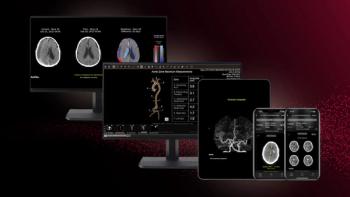
ISCT contrast sessions explore new technology, CIN risk factors
What do you get when you mix contrast delivery with computer technology? Dr. Dominik Fleischmann, director of CT at Stanford Hospital and Clinics kicks off a session at the International Society for Computed Tomography conference starting May 18 on contrast medium delivery and image enhancement. He will focus on how power injectors are starting to act as computers.
What do you get when you mix contrast delivery with computer technology? Dr. Dominik Fleischmann, director of CT at Stanford Hospital and Clinics kicks off a session at the International Society for Computed Tomography conference starting May 18 on contrast medium delivery and image enhancement. He will focus on how power injectors are starting to act as computers.
Fleischmann examines the ways power injectors are also computers and what that means for the radiology community. He will also discuss ways to track data that can be applied to contrast injection such as their use for radiofrequency identification technology.
Sandra S. Halliburton, Ph.D., a cardiac imaging scientist at the Cleveland Clinic poses a question in her presentation, “Contrast volumes for short scan time coronary CTA: how low can we go?” Recent changes in multidetector CT (MDCT) technology allow for extremely short scan times for coronary imaging, and shorter acquisition times permit lower contrast volumes. Thus the question: What is the optimal amount of contrast for enhancement of the coronary arteries during fast MDCT scans? She’ll answer that during her talk.
A well-known risk when it comes to contrast is the possibility of contrast-induced nephropathy (CIN). Dr. Steven D. Weisbord, from the renal section at the VA Pittsburgh Healthcare System and the renal-electrolyte division at the University of Pittsburgh, will describe which patients who undergo CT scans are at the highest risk for CIN. He will also discuss which patients are at high risk following CT and how to determine risk prior to the scan. He’ll list who he thinks should be screened for CIN and how best to estimate renal function.
Dr. Myron Pozniak, a professor of radiology, and chief of the abdominal CT section at the University of Wisconsin in Madison, and a colleague, will present data on contrast-induced acute kidney injury, formerly known as acute renal failure. They will describe how often it occurs and also the conditions that lead to it.
Newsletter
Stay at the forefront of radiology with the Diagnostic Imaging newsletter, delivering the latest news, clinical insights, and imaging advancements for today’s radiologists.



























